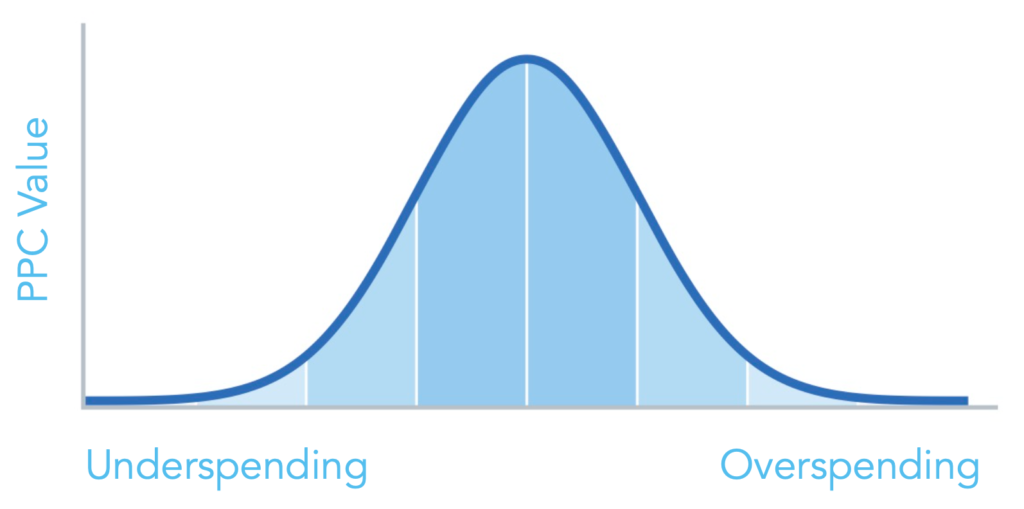LegitScript Certification is an important part of growing your business. We provide the only certification and monitoring service for US drug and alcohol addiction treatment providers that is relied on by Google, Microsoft, and Facebook to vet advertisers for eligibility. For pharmacies and other healthcare providers, our certification is recognized by Visa, Mastercard, Google, Microsoft Bing, Facebook, and TikTok.
Another important part of growing your business is online advertising. Even so, many companies struggle with starting or optimizing their digital ad campaigns. The experts at Dreamscape Marketing have provided the following tips on pay-per-click advertising to help you maximize the impact of your ad spend.
1. Target the right keywords.
Only target keywords that your levels of care allow and speak directly to your ideal patient.
Example: If you don’t offer a detox program and don’t want detox leads, make sure that you avoid targeting detox related keywords.
2. Your negative keyword research is just as important as your keyword research.
In the complex sectors of addiction treatment and healthcare, it’s not enough to focus on target keywords — you also need to identify and block keywords that drive the wrong type of traffic. Without a robust negative keyword strategy, a large percentage of your budget will be wasted on unqualified audience clicks.
Example: Failure to block the words “free” or “affordable” will generate a high volume of lower insurance coverage inquiries.
3. Aim for a balanced mix of digital marketing-driven business.
Regardless of industry, your pay-per-click campaigns should be a balanced part of your overall digital marketing strategy, and work in tandem with your search engine optimization (SEO) and other digital campaigns and initiatives to drive admissions or customers. When one part of your mix is heavily out of balance, your overall marketing strategy is not optimized for maximum return on investment (ROI) and you risk wasting marketing budget.
For addiction treatment providers, driving more than 35% of patient census from PPC risks increasing costs by double digits because of the increasing cost of the market and new competitors. On average, your cost-per-admission (CPA) from PPC will increase by 2% to 5% per year, based on the competition.
4. Evaluate PPC performance annually, not month-to-month, to account for seasonality.
The addiction treatment and healthcare spaces are subject to seasonal fluctuations in business. Because of this cycle, it’s difficult to gain a true understanding of your campaign’s performance when only comparing admissions rates or customer traffic month-to-month instead of annually.
While your business may be seasonal, your PPC spend and strategy shouldn’t be. Your PPC campaigns will still get clicks during the holidays and summer vacations, but admissions or other customers driven by those clicks will be on a delayed timeline. You still need to spend through these lulls to avoid losing those seasonally delayed admissions.
5. Historical data should guide your long-term strategy.
It takes about 90 days for a new account (one without any historical PPC performance data) to achieve optimal market levels, and 45+ days to reposition an existing campaign. Give any new campaigns enough time to gain traction and generate meaningful performance metrics before altering course.
While it can be tempting to start making granular, daily changes as you’re ramping up your PPC strategy, these changes are counterproductive and an irresponsible use of your budget. Your campaigns should be addressing trends in the market, and trends aren’t actualized daily.
Additionally, be aware of the “trend-to-spend” ratio. It’s nearly impossible to draw a data-backed conclusion on less than $10,000 PPC spend in this space, no matter the period over which that $10,000 is spent.
6. Underspending can be just as risky as overspending.
Your capital risk with PPC spend is the same if you underspend or overspend. Find the optimal level of spend based on your budget and cost-per-inquiry for care.
There is such a thing as underspending on paid ads and never capturing enough click volume from your efforts. There is also such a thing as experiencing diminishing returns past your optimal point of spend. Qualified inquiries and the overall “risk” curve on PPC creates a bell curve, shown below, based on total demand by geography. This bell curve tolerates larger spend in larger metro regions, but often comes with increased competition and increased costs.

Spending too much or too little on your paid digital marketing can compromise the pay-per-click value.
7. Set realistic expectations for costs and timelines.
Your PPC campaign will not deliver short-term miracles. No matter how carefully researched or skillfully executed they are, PPC campaigns require time to start generating a stable, sustainable ROI. Set expectations from the beginning to ensure your internal stakeholders are on board.
8. Don’t turn it off!
Spend consistently. Stopping and starting your PPC budgets hurts you on Google’s ad platforms. It’s a compound loss: not only will you lose the business that your campaigns would have driven the month you turned them off, but your ROI will be lower the following month as well and won’t return to your original levels until at least a month after that. Furthermore, turning your PPC ads on and off harms your competitive ad placements with Google.
9. Your success hinges on your call handling and close rate.
The percentage of calls you don’t answer is the percentage of pay-per-click advertising spend that you’re wasting entirely. The numbers can add up quickly, and the resulting waste can be surprising. For an operator spending $300,000 a month on PPC, failing to answer 10% of their calls yields a waste of $30,000 a month. Call center tracking, CRM systems, and staff training to minimize missed calls can not only help you make the most out of your PPC dollars, but also help improve your digital marketing attribution and ensure you have a true understanding of where leads are coming from and what makes them convert.
10. Strong video and graphic content can increase conversions.
Incorporating powerful video and graphics into your PPC campaigns can increase conversions by double digits. Don’t oversell the “curb appeal” of your center. Your digital marketing team can help you find the right balance. To optimize conversions, pay attention to your PPC landing pages.
Want a bonus tip on pay-per-click advertising? Click the button below to download the full PPC ad guide, which includes an eleventh tip!
The information in this tip sheet has been wholly provided by Dreamscape Marketing. For more information on improving your digital marketing strategy, contact the experts at Dreamscape Marketing or another trusted digital marketing agency. LegitScript is unable to provide digital marketing advice and is unable to affirm or endorse the tips provided in this post.




